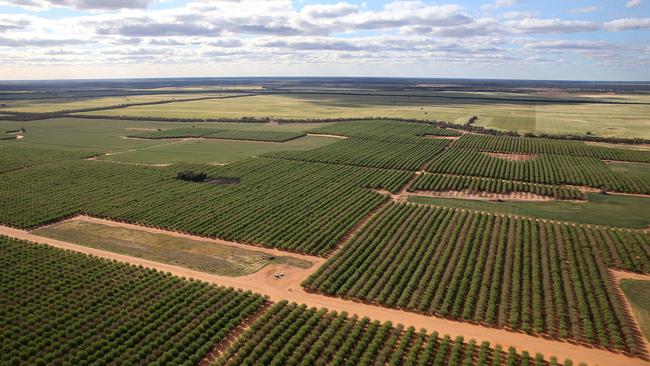Australian Farm Index defies drought to lift in September quarter
The Australian Farm Index lifted in the September quarter of last year despite persistent drought conditions.

HEALTHY income and a lower Australian dollar have combined to overcome drought conditions and lift the Australian Farm Index in the September quarter of 2019.
A quarterly total return — comprising income and capital appreciation components — of 2.46 per cent for the third quarter of calendar year 2019 lifted the annualised total return to 14.37 per cent.
The index measures the performance of 50 farming properties run by seven corporate agricultural investors and with a combined asset value of more than $1.1 billion.
The index is heavily weighted towards permanent horticultural crops, such as almonds and citrus plantations, representing total market value of $800 million.
The participants in the index contributing data are Argyle Capital Partners, AAG Investment Management, gofarm Australia, Gunn Agri Partners, Hancock Agricultural Investment Group, Laguna Bay and Rural Funds Management.
The index shows income returns for the September quarter at 2.09 per cent.
That helped lift the income return for the 12 months to September 30 to 6.01 per cent.
Argyle Capital Partners said a vast section of eastern and southern Australia’s prime farmland had experienced record low three-year aggregate rainfall totals.
“Consequently, annual cropping programs were curtailed in 2019 and will likely impact income returns for those enterprises several quarters through 2020 as there will be reduced crops harvested in the months ahead,” the company said.
“Livestock enterprises through 2019 required either destocking, supplementary feeding at great expense or both.
“Permanent agricultural enterprises remained profitable through Q3, 2019 with average income up 3.90 per cent and capital values holding firm.”
Argyle said returns from citrus, almonds and table grapes had benefited from free trade agreements and demand from premium Asian markets.
It said a lower Australian dollar against the US dollar had maintained Australia’s agricultural export competitiveness, with the almond industry also benefiting from substitution of Californian product in the Chinese market.
But warning signs are on the horizon.
MORE THE WEEKLY TIMES AGRIBUSINESS NEWS
THE WEEKLY TIMES AUSTRALIAN FARM INDEX ARTICLES
WHAT YOU GET AS A THE WEEKLY TIMES SUBSCRIBER
“Permanent farmland operations are typically irrigated farms,” Argyle said.
“The prolonged drought has dramatically impacted the availability of irrigation water across the entire eastern half of Australia for 2019-20.
“Irrigated farms face the prospect of purchasing very expensive water for their 2019-20 irrigation requirements.
“It is anticipated this added expense may impact income returns for permanent cropping enterprises in subsequent quarters.”


